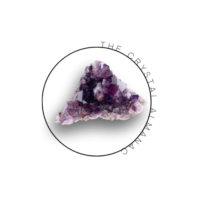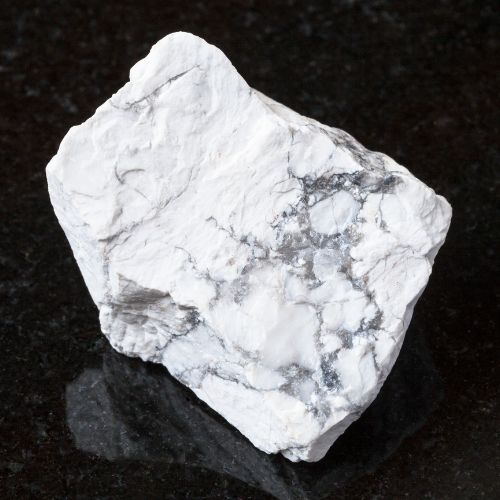Painite, originally mistaken for ruby, is considered one of the rarest gemstones in the world. Its scarcity and allure have captured the attention of collectors and gem enthusiasts worldwide. So, let’s delve into the fascinating world of painite and discover why it is so highly sought after.
Key Takeaways:
- Painite is a rare red gemstone from Myanmar, often mistaken for ruby.
- It is considered one of the rarest gemstones globally and has great value.
- Painite can be used as an alternative birthstone and for milestone anniversaries.
- Its unique composition and rare elements make painite truly extraordinary.
- Painite’s healing properties include enhancing passion, vitality, and spiritual growth.
Painite Specifications and Characteristics
Painite is a rare gemstone with unique specifications and characteristics. Here is a closer look at what sets painite apart:
1. Mineral Composition:
Painite is a calcium zirconium aluminum boron silicate mineral. It also contains trace elements like hafnium and titanium. Its main components are aluminum oxide and zirconium oxide.
2. Crystal System and Color:
Painite forms as long, transparent crystals with a hexagonal crystal system. It comes in a range of colors, including red, brownish-red, and orange-red.
3. Physical Properties:
Painite has a vitreous luster and is transparent. It has a Mohs hardness of 7.5-8, making it a durable gemstone. The density of painite ranges from 4.0 to 4.3. It exhibits conchoidal fracture and leaves a red streak.
4. Fluorescence and Pleochroism:
Painite shows fluorescence under UV light, with weak red luminescence in LW-UV and strong red or green luminescence in SW-UV. It also exhibits pleochroism, meaning it shows different color variations depending on the angle of observation.
These specifications and characteristics make painite a truly unique and captivating gemstone.
Painite Identification
Identifying painite can be a challenge due to its resemblance to other gemstones such as ruby and garnet. However, there are certain characteristics that can help distinguish painite from its lookalikes. Here are some key factors to consider when identifying painite:
- Refractive Index: Painite is birefringent, meaning it has two refractive index measurements, while garnets and rubies do not. This property can be determined through refractometer tests.
- Color and Luster: Painite typically ranges in color from red to brownish-red and exhibits a vitreous luster. This can be observed through visual inspection.
- Hardness: Painite has a Mohs hardness of 7.5-8, making it relatively durable compared to softer gemstones. This can be tested using a hardness testing tool.
- Crystal System: Painite is characterized by a hexagonal crystal system, which can be identified through crystallography analysis.
- Transparency: Painite is transparent and allows light to pass through, unlike certain imitations that may appear opaque or cloudy.
By considering these factors and conducting the appropriate tests, gemologists and enthusiasts can accurately identify painite and distinguish it from other gemstones.
Painite Meaning and History
Painite derives its meaning from its vibrant red color, symbolizing power, passion, and purpose. In Chinese culture, the color red is associated with success and happiness, while in Feng Shui, red stones are believed to attract prosperity and passion. This rare gemstone was first discovered by British mineralogist Arthur Charles Davy Pain in Myanmar during the 1950s. Initially mistaken for ruby, painite was later identified as a distinct mineral. Since then, painite has gained recognition for its exceptional rarity and unique properties.
Recognized as one of the rarest gemstones in the world, painite’s rarity stems from its composition and the fact that it can only be found in Myanmar. Its intense scarcity was officially acknowledged by the Guinness World Records in 2005, with less than 24 known painite gems at the time. Though more painite crystals have been unearthed since then, facetable material remains extremely scarce.
The historical significance of painite lies in its discovery and subsequent recognition as a gemstone distinct from ruby. Its rarity, combined with its captivating beauty, has made painite highly desirable among collectors and gem enthusiasts. While not commonly found in commercial jewelry settings, painite’s allure continues to grow, attracting attention from both collectors and investors.
Painite Discovery and Sources
Painite, one of the rarest gemstones in the world, was first officially discovered in Myanmar in the 1950s by Arthur Charles Davy Pain. Initially mistaken for ruby, this unique gemstone was later identified as a new mineral. Painite’s rarity was officially recognized by the Guinness World Records in 2005, with fewer than 24 known painite gems at that time. Since then, additional painite crystals have been uncovered, but facetable material remains extremely scarce.
The primary source of painite is Myanmar, specifically the Mogok region. It is typically found in skarn rocks, often alongside rubies and other minerals. The mining process for painite can be challenging and labor-intensive, requiring meticulous searching and excavation. Due to its scarcity, painite is not commonly found in commercial jewelry settings.
Despite its rarity, painite continues to captivate collectors and gem enthusiasts around the world. Its unique composition, beautiful coloring, and historical significance make it a highly sought-after gemstone with a fascinating story.
Painite Value and Pricing
Painite is an incredibly valuable gemstone due to its extreme rarity. Its scarcity in the market has driven its price to astonishing heights, making it a highly sought-after gemstone for collectors and investors. On average, the price of painite can range from $50,000 to $60,000 per carat, although prices can vary based on several factors.
The carat weight of the painite significantly affects its value, with larger specimens commanding higher prices. Additionally, the color, cut, clarity, and size of the painite gemstone can also influence its price. The most valuable painite specimens showcase deep red or vibrant garnet-red hues, which are highly desirable among collectors.
When it comes to evaluating painite, well-cut and eye-clean gemstones tend to be more valuable. These characteristics enhance the stone’s brilliance and overall appearance. However, due to the rarity of painite and its limited supply, it is not commonly found in commercial jewelry settings.
Painite Pricing Factors:
- Carat weight
- Color intensity
- Cut quality
- Clarity
- Size
The high value and limited availability of painite make it a prized gemstone for those seeking rare and exceptional pieces. Its unique allure, coupled with its rich history and metaphysical properties, further adds to its desirability.
Painite Uses and Metaphysical Properties
Painite, with its rarity and unique properties, has various uses and is highly valued by collectors and gem enthusiasts. Here are some of the common uses of painite:
- Jewelry: Painite is often used in high-end jewelry pieces, such as rings, pendants, and earrings. Its vibrant red color and scarcity make it an exquisite choice for those seeking a truly exclusive gemstone.
- Collecting and Investment: Due to its extreme rarity, painite is highly sought after by collectors and investors. It is considered a valuable addition to any gemstone collection, and its value has been known to appreciate over time.
- Healing: In metaphysical practices, painite is believed to possess powerful healing properties. It is said to enhance passion, vitality, motivation, and spiritual growth. Painite is also believed to aid in balancing the chakras, promoting energy flow and overall well-being.
When it comes to metaphysical properties, painite is renowned for its ability to open and align all seven chakras. By doing so, it promotes harmony, balance, and a sense of groundedness. Painite is also associated with the element of fire, which is believed to ignite passion, creativity, and transformation within individuals.
Crystal healers and practitioners may use painite to support individuals in letting go of negative habits or thought patterns. Its energy is thought to encourage personal growth, courage, and a clear sense of purpose. Painite with brown undertones is said to provide additional grounding and stability, allowing individuals to stay connected to the present moment.
In conclusion, painite serves as a captivating gemstone with a wide range of uses, from its aesthetic appeal in jewelry to its potential for metaphysical healing. Its scarcity and unique metaphysical properties have not only made it a sought-after gem but have also solidified its place as one of the most revered and valuable gemstones in the world.
Verifying the Authenticity of Painite
When it comes to purchasing a painite gemstone, verifying its authenticity is crucial. To ensure you are getting a genuine painite, there are several tests you can conduct. Start by visually inspecting the gemstone for any signs of artificial coloring or treatment. A real painite should have a natural look and exhibit a vitreous sub-adamantine luster.
Another important test is measuring the refractive index and specific gravity of the gemstone. Genuine painite will display specific characteristics in these measurements that distinguish it from imitations. For a more conclusive verification, consider spectrum analysis, which provides unique spectral patterns that are indicative of painite.
To have complete confidence in the authenticity of your painite, obtaining a certificate of authenticity from a reputable gemstone laboratory is essential. The certificate will provide detailed information about the gemstone’s origin and properties, giving you peace of mind in your purchase.
FAQ
What is painite?
Painite is a rare red gemstone from Myanmar that is considered one of the rarest gemstones in the world. It was originally mistaken for ruby but has unique properties and composition that set it apart.
How can painite be identified?
Painite can be identified through its specific characteristics such as its hardness, crystal system, color, luster, and transparency. It can be easily confused with ruby or garnet, but refractive index measurements and other distinguishing factors can help differentiate it.
What is the meaning of painite?
Painite’s red color symbolizes power, passion, and purpose. It is believed to enhance vitality, motivation, and spiritual growth. In Chinese culture, red stones represent success and happiness, while in Feng Shui, they are used to attract prosperity and passion.
Where is painite found?
Painite is primarily found in Myanmar, specifically in the Mogok region. It is typically sourced from skarn rocks, often alongside rubies and other minerals.
How valuable is painite?
Painite is highly valuable due to its extreme rarity. The price of painite can range from $50,000 to $60,000 per carat on average, with larger, well-cut specimens commanding higher prices. Its limited supply makes it attractive to collectors and investors.
What are the uses of painite?
Painite is used for various purposes, including jewelry, collecting, investment, and healing. It is highly prized by collectors and gem enthusiasts for its rarity and unique properties. Metaphysically, painite is believed to promote balance, energy flow, and overall well-being.
How can I verify the authenticity of a painite gemstone?
To verify the authenticity of a painite gemstone, several tests can be conducted. These include visual inspection, refractive index measurement, specific gravity measurement, spectrum analysis, and obtaining a certificate of authenticity from a reputable gemstone laboratory.


